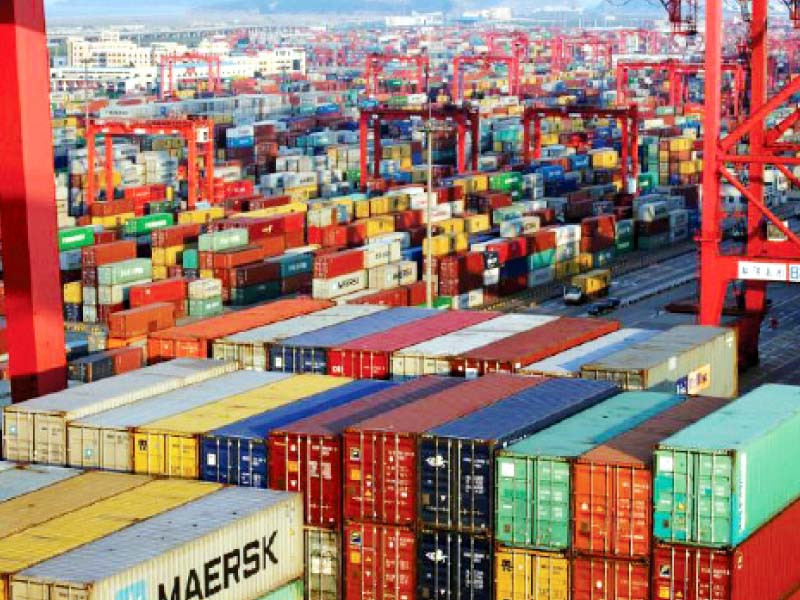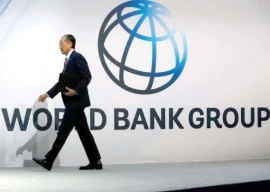
Despite growing at a healthy rate of 5.97% in FY22, Pakistan’s economy remains in hot waters and needs an IMF bailout.
In fact, the heathy growth rate is being widely considered to be one of the principal reasons behind the gloomy economic scenario. For the upcoming fiscal year, a softer 5% growth target has been announced in the budget.
Why instead of inspiring confidence in the economy, the nearly 6% growth rate has generated pessimism?
The answer to this question lies in analysing the composition of gross domestic product (GDP) during the outgoing financial year.
The GDP is categorised into three components: consumption, investment and net exports (difference between export and import of goods and services) and takes stock of the share of each component in the total expenditure.
This approach is important, because the middle-to-long-run growth of the economy depends not only on how much income is generated but also on how the income generated is spent.
Consumption represents the satisfaction of current needs. Universally, consumption is the single largest component of the GDP and comprises household and government consumption expenditure.
Investment is the satisfaction of future needs by raising the productive capacity of the economy. It comprises both public and private sector investment expenditure.
Disposable income (income minus direct taxes) generated in an economy can either be spent or set aside in the form of savings for investment. There is thus a trade-off between consumption and savings or investment spending. The more an economy consumes, the less income it will be left with for investment.
Exports represent the difference between domestic output and domestic consumption. The higher the domestic consumption, the lower will be the volume of goods and services available for exports.
Imports represent the difference between domestic demand and domestic output (minus exports). Higher domestic demand relative to the domestic output makes for higher import volume.
From the theoretical framework, let’s move to the actual figures. According to the Pakistan Economic Survey, during FY22, the consumption expenditure accounted for 96.2% of GDP, while the share of investment remained at 15.1%.
Household consumption accounted for 85.2% of the total expenditure. By source, the 15.1% investment expenditure was anchored by 11.1% national savings including 4.5% domestic savings and 4.1% foreign savings.
The combined share of consumption and investment in GDP adds up to 111.3%, which isn’t possible, as it can’t exceed 100%. The only way to make this possible is for the third component of expenditure, ie net exports to represent a negative figure, which in FY22 remained at -11.4% (exports 10.5%, imports 21.9%).
This describes why despite registering a robust growth, the economy is in a precarious state and needs immediate capital inflows from abroad, forcing the government to take very stringent and manifestly unpopular measures at the IMF’s behest.
The composition of GDP in FY22 thus represents a double whammy. One, consumption had a disproportionately high share relative to investment. At 15.1%, the investment-to-GDP ratio in Pakistan remains one of the lowest in the world, thus making it exceedingly difficult to register sustained growth.
Two, even the meagre level of investment was financed by a much lower level of domestic savings (4.5% of GDP).
This isn’t surprising as the disproportionately high share of consumption in the total expenditure left little space for domestic savings.
Since total savings in an economy must equal to the total investment, the only way a country can have investment greater than domestic savings is to draw upon savings from abroad through both debt and non-debt creating instruments.
The savings from abroad can take two forms: (a) savings from Pakistani nationals living abroad and (b) foreign savings.
During FY22, the gap between domestic and national savings, as a percentage of GDP, was 6.6 percentage points, which was mainly accounted for by the $22.9 billion in remittances received from the expatriate Pakistanis.
The four-percentage-point difference, as a percentage of GDP, between national savings and investment was accounted for by the foreign savings.
Of the foreign savings or capital inflows, foreign investment, representing a non-debt creating instrument, during the first nine months of FY22 sat at $1.45 billion, or 0.38% of GDP.
During this period, the country borrowed $12.78 billion (3.34% of $383-billion GDP) in foreign debt, which accounted for the lion’s share in total foreign savings.
Not surprisingly, the accumulated foreign debt reached $88.8 billion at the end of March 2022.
Servicing of the debt constitutes a drag on both future consumption and investment. During FY22 (Jan-Mar), the external debt repayments and interest payments were recorded at $8.14 billion and $1.30 billion respectively, constituting together 2.46% of GDP.
Increased consumption widened the gap between domestic demand and domestic output, which was filled by rising imports.
As 38.7% export growth failed to keep pace with 45.7% import growth, the trade deficit ballooned up, increasing the country’s external debt.
In short, the consumption-based growth financed heavily by foreign savings put the economy on a dangerous, unsustainable trajectory.
Using an analogy, suppose in view of a sudden uptick in demand, a car manufacturing company produces 20,000 units in a year, which is even more than its maximum production capacity of, say, 19,000 units.
On the face of it, this is a brilliant performance, as it has shored up the company’s sales revenue. However, a detailed analysis reveals that the feast was accomplished by making the staff work overtime, using the machinery flat out, sub-contracting the production of 1,000 units, purchasing parts and components at higher prices, and borrowing at a higher interest rate.
As a result, at least 50% of the worn-out machinery needs to be replaced, exhausted workers will have to be compensated for the overtime, the contractors and suppliers need to be paid and debt obligations have to be met.
The accumulated cost of meeting these expenditures is so high that the company will have to lay off at least 20% of the workforce, will be able to replace only 25% of the worn-out machinery, and can purchase not more than 70% of parts and components required to meet new production target.
As a result, in the following year, production will have to be slashed to a maximum of 12,000 units. Higher output has done more damage to the company than good.
The writer is an Islamabad-based columnist
Published in The Express Tribune, June 20th, 2022.
Like Business on Facebook, follow @TribuneBiz on Twitter to stay informed and join in the conversation.

1732013245-0/now-you-see-me-(1)1732013245-0-405x300.webp)
1730959638-0/trump-(19)1730959638-0-165x106.webp)















COMMENTS
Comments are moderated and generally will be posted if they are on-topic and not abusive.
For more information, please see our Comments FAQ